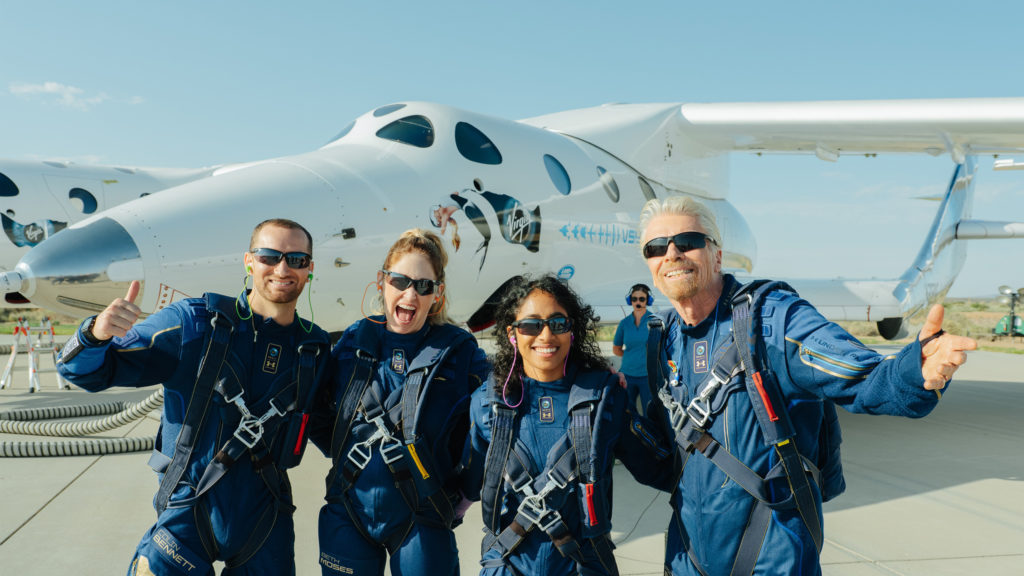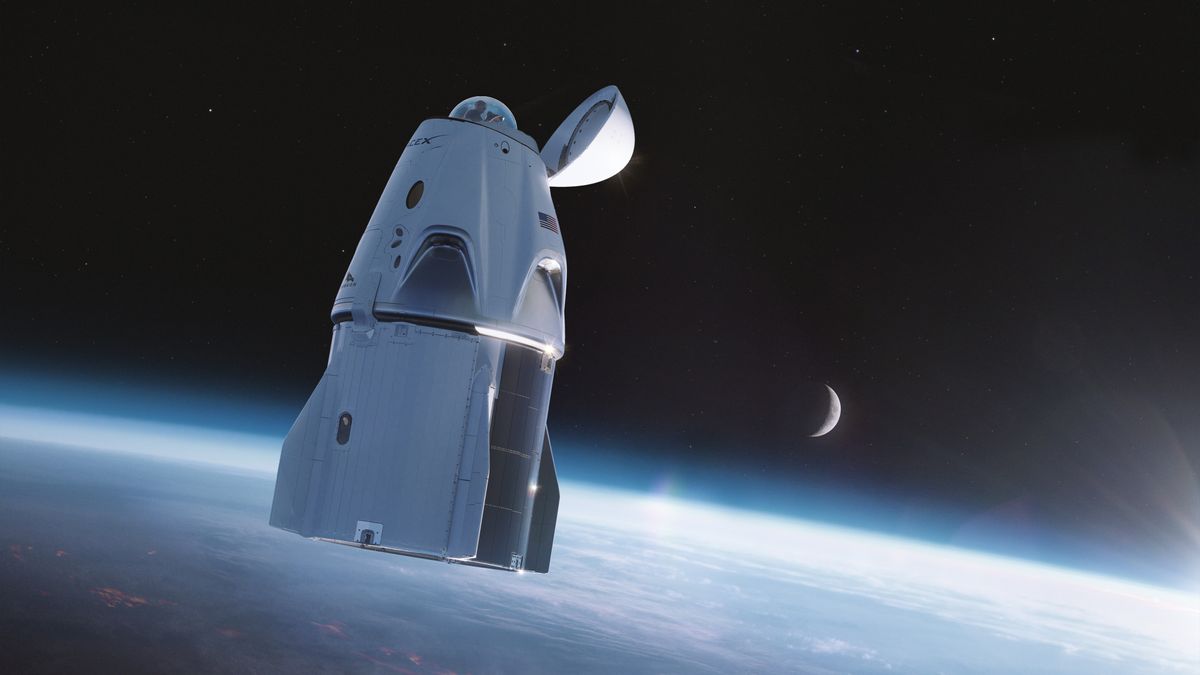
One small step for a spacecraft, but, a giant leap for space travel
July is a big month for private space travel. Yesterday, Sir Richard Branson traveled into space, to “evaluate the customer spaceflight experience” aboard Virgin Galactic‘s VSS Unity. In nine days, Amazon founder Jeff Bezos will travel into space aboard his commercial space travel company’s, Blue Origin, first flight.
Both flights offer slightly different experiences, with one being a spaceplane and the other a pure rocket. They are similar in that they herald in a new era of space travel where private citizens can be space tourists, or as the companies market the trip, astronauts. Historically, the coveted astronaut title and experience has been exclusive to government entities (cosmonauts – Russia, taikonauts – China). Which is why, although Virgin’s VSS Unity and Blue Origin’s New Shepard may be simply seen as incremental spacecraft developments, they represent a larger shift in our planet’s spacefaring capabilities.
The Experience
Virgin Galactic’s maiden flight involved a ‘mothership,’ named VMS Eve, conventionally taking off from Spaceport America in New Mexico, with VSS Unity mated beneath. Just below 50,000 feet VMS Eve released VSS Unity which ignited its hybrid rocket engine for 60 seconds, accelerating to Mach 3.1 in order to reach its maximum altitude, or apogee, of 86 kilometres (nominally the company aims for 90 kilometres).
While transitioning through apogee, the vessel’s six passengers may unstrap and experience micro gravity for a few minutes before settling in for a unique deceleration involving folding wings, and a human-guided descent and landing back at Spaceport America about thirty minutes after take off.
Blue Origin’s trip is a vastly different experience. New Shepard is a fully autonomous rocket (i.e. no pilots), launching vertically from Blue Origin’s site in Texas like a conventional spaceflight for a 150-second rocket burn. When the fuel is expended the motor and fuel stage separate from the crew capsule, which continues to an apogee of just over 100 kilometres. Up to six passengers enjoy lie-flat seating with an almost panoramic view during their brief ten-minute journey. On descent, a parachute system brings the capsule back to land.

Spaceflight
The two companies have both gone to lengths to validate that their trip is legitimately “spaceflight,” rather than simply high altitude. Blue Origin defines this as the internationally recognised Kármán line, 100 kilometres above Earth’s mean sea level. Virgin Galactic, however, use NASA’s and the US Air Force’s 80 kilometres above sea level as the boundary between Earth’s atmosphere and space. Regardless, at either vessel’s apogee, there are no aerodynamic forces, and passengers and pilots alike are for all intents and purposes in space.
Whether a space tourist has earned the title of ‘astronaut’ is a matter of opinion. Technically, they have met an altitude criteria, but culturally, historically, and from a competency perspective a space tourist is not a professional astronaut. A space tourist will, however, need to have reasonable wealth to travel aboard either company’s offering. A ticket aboard Virgin Galactic’s flagship costs USD250,000, and Blue Origin’s experience is similarly priced, although not known exactly. As both systems mature costs may reduce.
What about Elon?
As an encore to July, September will see the launch of SpaceX’s Inspiration4, a proven Crew Dragon vehicle, for the world’s first all-civilian space ‘mission.’ Although SpaceX’s founder, Elon Musk, won’t be aboard – the experience has been paid for by Jared Isaacman, a successful entrepreneur and founder of Draken International, who has assembled a crew of three others, their backgrounds and ambitions reflecting the “mission pillars” of Hope, Generosity, and Prosperity (along with his of Leadership).
At a soon-to-be announced launch date (~September), Inspiration4 will launch into low earth orbit on a Falcon 9 rocket, from NASA’s historic launchpad 39A at the Kennedy Space Center. Over three days the vessel will remain in orbit, with no specific mission but tourism.
The cost of the entire mission, going by SpaceX’s public list price, is upwards of USD62m – although the details have been kept private. All crew members will undergo reasonably extensive commercial astronaut training through SpaceX, including orbital mechanics, operating in microgravity and zero gravity environments, stress testing, emergency preparedness training, mission simulations, and learning about the Falcon 9 launch vehicle and Dragon spacecraft systems.
